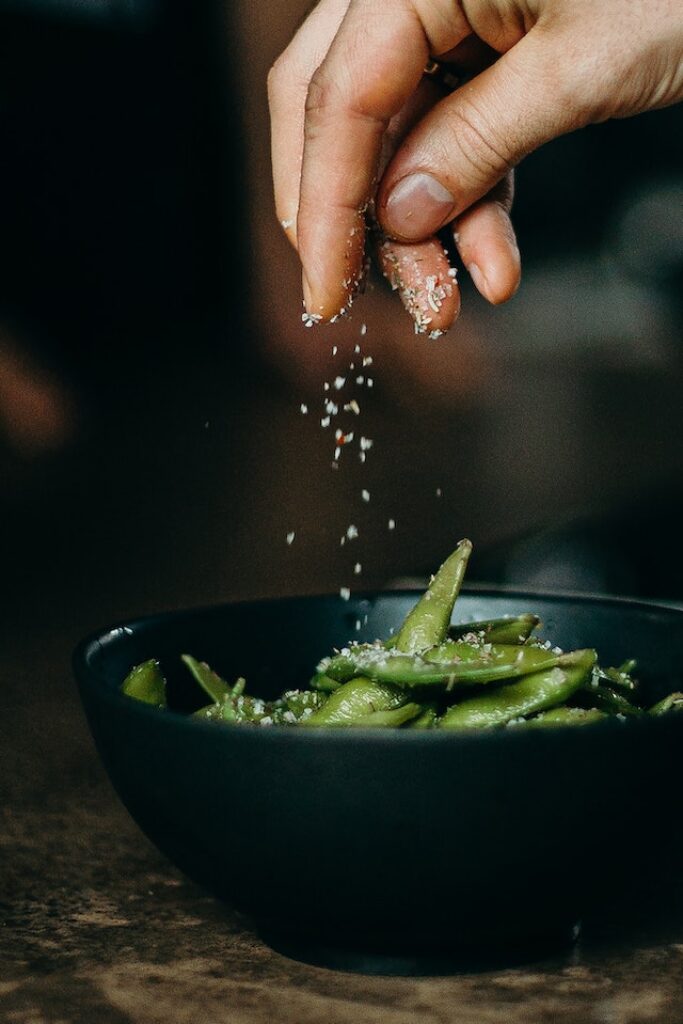Salt plays an important role in the most of vegan and vegetarian dishes. Salt has many functions apart from its flavour, salty. Salt can enrich the flavour of the cuisine. Salt can add additional layer of flavours into the dishes. Salt is one of the 4 basic cooking elements. It tips the scale in plant-based cooking.
Varied cooking functions
Salt accentuates the taste
Salt is soluble in water but not in oil. Therefore, salt is water soluble. When we marinate food, whether we should add oil and how much oil we should add depend on the time you plan to let it stand for seasoning and the desired “saltiness”. The reason is that when salt is added to food with oil or butter, the oil will cover part of the salt grains. It will delay or hinder the dissolution of the salt.
Salt interacts with water differently
Salt increases the density of water. When water is denser, it is harder for a soup or sauce to thicken. When food is cooked, salt reduces the loss of juices and keeps food tender. Salt can also change the protein structure. Once the structure is changed, the protein-containing food will not easily release their juice. However, salt has little effect on locking water in vegetables, because vegetables contain very little protein. Besides, vegetables have a protective surface to prevent external forces from invading. On the other hand, if we blanch vegetables, it is easy to lose the nutrients and minerals of the vegetables. Adding salt into water can keep the nutrients and reduce the rate of loss.
Salt does more
Salt can help gluten build up. Therefore, adding salt to the dough strengthens the gluten.
Salt can help speed up the softening of the vegetables and hence shorten the blanching time.
Eggplant flesh will turn black when it is exposed to air. Salt can reduce the likelihood of turning it dark brown when we put the eggplant flesh into a salty water.
Because of the food preservation effect provided by salt, many people use the method of salting food to store food.
Different salts add different flavours
Salt has 2 types – sea salt and non-sea salt. Sea salt is collected from sea through seawater evaporation. Non-sea salt, such as rock salt, is from the salt left over from the evaporation of seawater millions of years ago.
- White coarse salt or refined salt contains no flavour other than “salty”.
- Natural sea salt is grayish in colour. It is moist and soft. It goes well with vegetables.
- Smoked salt, like Chardonnay smoked salt, is brown in colour. It adds its flavour to soups and vegetarian dishes.
- Himalayan salt is pink in colour. It has more iron compared to other salt varieties.
- Persian blue salt is blue in colour. It has more potassium content compared to other salt varieties.
- Maldon sea salt is a poorly soluble in water. It is light and crispy. It is mainly used for adding them on the finished dishes.
- Hawaiian red salt is made red by using clay when drying the salt. This salt has a slightly earthy taste.

Understanding the characteristics of salt and its reactions in different food cooking environments can help you cook a variety of vegan and vegetarian dishes more handily.






